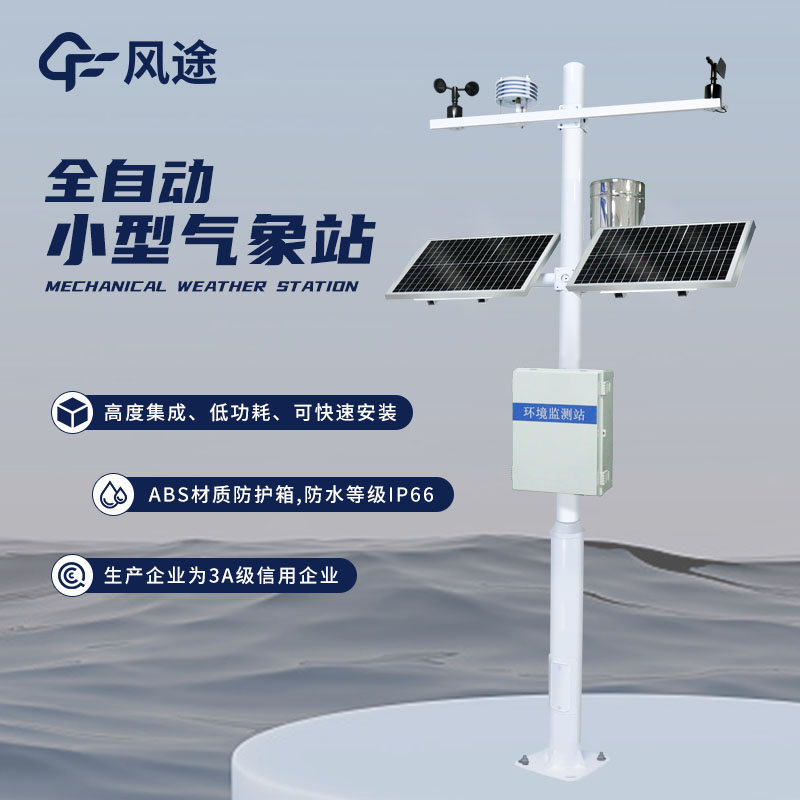In the past, meteorological monitoring often relied on manual work. Workers had to frequently visit various stations, operate instruments manually, and record data. The process was cumbersome and inefficient. However, with the rapid development of technology, the emergence of Small automatic weather stations has changed this situation.
So how does it achieve "unattended" operation? It mainly relies on the following settings:
Automatic Data Collection
It is equipped with a variety of high-precision sensors, such as sensors for temperature, humidity, wind speed, wind direction, atmospheric pressure, rainfall, solar radiation, etc. These sensors can perceive changes in meteorological elements in real-time and convert them into electrical signals. The data collection system will automatically collect these electrical signals at a set frequency, achieving automatic collection of meteorological data without human intervention, ensuring the continuity and timeliness of data.
Automatic Data Processing
The collected electrical signals are processed by the data processing device for linearization and quantification, realizing the conversion from engineering quantities to element quantities and converting them into specific meteorological element values. At the same time, operations such as data screening and quality control will also be carried out to remove abnormal values and incorrect data, improve data quality, and automatically generate various meteorological reports and statistical analysis results, such as daily averages, monthly averages, extreme values, etc.
Automatic Data Storage
The data collector has internal and external memory (expandable) and can automatically store the collected meteorological data. It has a large storage capacity and can store data for several years or even decades. Even in case of power outages and other situations, the data will not be lost, which is convenient for subsequent query and analysis.
Automatic Data Transmission
It has a variety of communication methods, such as GPRS, 3G, 4G, 5G, wired network, etc., and can automatically transmit meteorological data in real-time to remote servers, data centers, or user terminals. Regardless of the distance, users can view and manage meteorological data at any time through the network, achieving remote monitoring.
Automatic Operation and Monitoring
The operation of the entire weather station is automatically controlled and managed by a computer program or microprocessor. It can automatically complete a series of operations such as data collection, processing, storage, and transmission without on-site manual operation. At the same time, some weather stations also have self-diagnosis and fault alarm functions, which can automatically monitor the operating status of the equipment. When a fault or abnormality occurs, maintenance personnel can be notified in a timely manner through text messages, emails, etc.
Automatic Power Management
The weather station is equipped with a power supply system such as solar panels and batteries, which can automatically achieve solar charging and battery management. When there is sunlight, the solar panels convert solar energy into electrical energy to power the equipment and charge the batteries; at night or on cloudy days, the batteries power the equipment, ensuring that the weather station can operate normally under various weather conditions and realizing automatic power supply and management.

Article address:https://www.sqqx.net/en/news/581.html

 +86 15898932201
+86 15898932201



